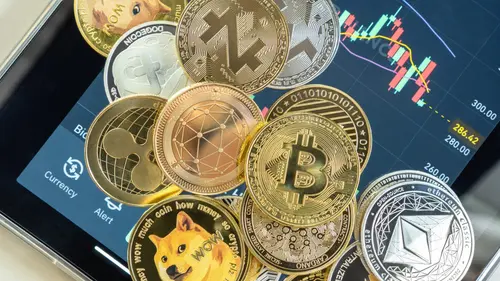Altcoins: Beyond Bitcoin – Unraveling the World of Alternative Cryptocurrencies
Introduction
The world of cryptocurrencies extends far beyond the ever-popular Bitcoin. While Bitcoin remains the undisputed pioneer of the blockchain revolution, a plethora of alternative cryptocurrencies, known as “altcoins,” have emerged, each with unique features and applications. In this article, we will embark on a journey to explore the fascinating and diverse realm of altcoins, delving into their origins, purposes, and the innovation they bring to the world of blockchain and digital assets.
I. The Birth of Altcoins
As the inaugural cryptocurrency, Bitcoin set the stage for a financial revolution, but it also paved the way for others to follow. The term “altcoin” is a portmanteau of “alternative” and “coin,” encompassing any cryptocurrency other than Bitcoin. Altcoins began to surface in the early 2010s, with some of the earliest examples being Namecoin and Litecoin. They aimed to address perceived limitations of Bitcoin, such as transaction speed and the energy-intensive proof-of-work consensus mechanism.

II. Diverse Altcoin Ecosystem
The altcoin ecosystem is incredibly diverse, with thousands of projects each offering unique features and use cases. Some notable altcoins include:
- Ethereum (ETH): Ethereum introduced the concept of smart contracts, enabling developers to create decentralized applications (DApps) on its blockchain. It has become the foundation for decentralized finance (DeFi) and non-fungible tokens (NFTs).
- Ripple (XRP): Ripple focuses on enabling faster and cheaper cross-border payments for financial institutions, making it a key player in the realm of remittances and international money transfers.
- Cardano (ADA): Cardano is celebrated for its academic approach to blockchain technology, emphasizing security, scalability, and sustainability.
- Polkadot (DOT): Polkadot is pioneering interoperability between different blockchains, facilitating seamless communication and data sharing between them.
- Chainlink (LINK): Chainlink brings real-world data onto the blockchain through decentralized oracles, a crucial component for DeFi, NFTs, and more.
- Litecoin (LTC): Often referred to as digital silver, Litecoin offers faster transaction confirmations and a different hashing algorithm than Bitcoin.
III. The Purposes of Altcoins
Altcoins are not just imitations of Bitcoin; they serve a multitude of purposes and bring innovation to the blockchain space:
- Improving Scalability: Some altcoins aim to enhance transaction speed and scalability, addressing the concerns related to Bitcoin’s network congestion.
- Privacy and Anonymity: Altcoins like Monero (XMR) and Zcash (ZEC) focus on providing enhanced privacy features, offering users greater anonymity in their transactions.
- Interoperability: Projects like Polkadot and Cosmos (ATOM) strive to create bridges between various blockchains, allowing for seamless data and asset transfer between different networks.
- DeFi and NFTs: Altcoins play a significant role in the decentralized finance (DeFi) and non-fungible token (NFT) ecosystems, providing the foundation for lending, borrowing, trading, and creating unique digital assets.
- Specialized Use Cases: Some altcoins are created for very specific purposes, such as Siacoin (SIA) for decentralized storage and Chainlink for decentralized oracles.
IV. Risks and Considerations
While altcoins offer great potential, they also come with risks:
- Volatility: Altcoins are often more volatile than Bitcoin, making them riskier investment options.
- Lack of Regulation: Many altcoins operate in a less regulated environment than traditional financial assets, increasing the risk of fraud and market manipulation.
- Project Viability: The success of an altcoin project depends on its development team, community support, and the actual utility it provides. Not all projects are created equal.
- Market Saturation: The sheer number of altcoins can be overwhelming, making it challenging for investors to identify worthwhile investments.
V. The Future of Altcoins
The future of altcoins is both exciting and uncertain. As the cryptocurrency space continues to evolve, some trends to watch for include:
- Further Specialization: Altcoins will continue to specialize in unique use cases, catering to niche markets and solving specific problems.
- Interoperability: Projects like Polkadot, Cosmos, and ICON are leading the way in creating bridges between different blockchains, fostering greater collaboration and data sharing.
- Regulatory Developments: As governments worldwide work on cryptocurrency regulations, altcoins may face changes in their operating environments.
Conclusion
Altcoins are more than just alternatives to Bitcoin; they represent the dynamic and evolving nature of blockchain technology. Each altcoin offers its unique set of features, serving diverse purposes in a rapidly changing digital landscape. As the crypto space continues to mature, altcoins will play an integral role in shaping the financial, technological, and societal landscapes of the future. However, investors and enthusiasts must exercise caution, conduct thorough research, and stay informed to navigate this ever-expanding and transformative world of cryptocurrencies.